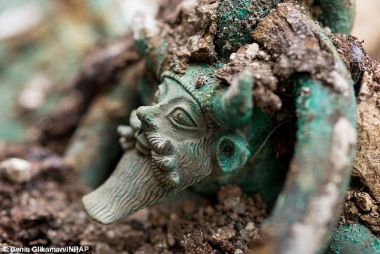Grave of Celtic Prince unearthed in France

Archaeologists from the National Archaeological Institute (INRAP) in France have unearthed a 2,500 year-old grave of a Celtric Prince from the first Iron Age, and along with it artifacts that could lead to more discoveries about the period.
The site, which spans 130 feet, is the largest burial site found from the 5th century. In its centre is the 14-meter burial chamber of a Celtic Prince, with his chariot still bearing its iron wheels.
The site was found in Lavau, France and the excavations have been going on since October last year.
While the burial chamber still remains unopened, the INRAP team has expressed excitement over the other ancient artifacts found in the site, which are consistent with the profile of the Iron Age where there was widespread use of metal.
Archaeologists were able to catalogue the artifacts on the site, including several basins, a bronze bucket, a fluted piece of pottery, and a sheathed knife.
However, the main item that piqued the interest of INRAP was the 1-meter bronze wine cauldron that had handles bearing the image of the Greek god Achelous. The cauldron also features eight lion heads and an image of Dionysius, leading the team to believe that it was made by the Greeks or the Etruscans.
The cauldron, they believe, may have been used by the ancient Celtic aristocrats in feasts. It was also covered in gold at the top and the base. A perforated silver spoon found as part of the banquet utensils may have been used to filter the wine.
According to INRAP president Dominique Garcia, the pieces are evidence of exchanges that happened between the Mediterranean and the Celts as the end of the beginning of the 5th and sixth centuries marks the time that trade started to increase between the two regions.
Garcia said that the excavation of the site will be completed at the end of the month.











